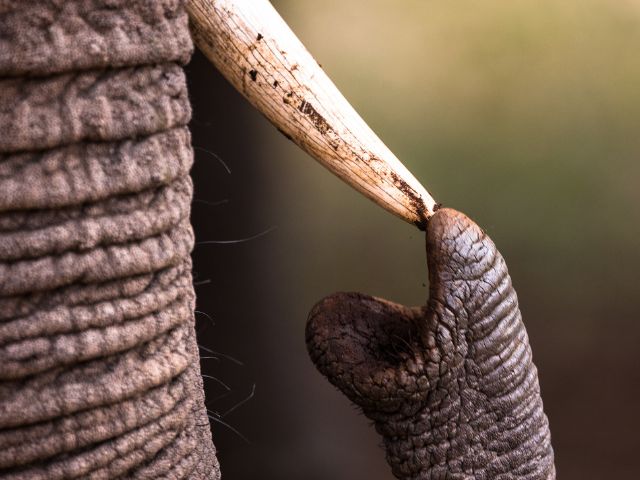
-
3D-Printed ‘Ivory’ Is Helping Save Elephants Who Are Slaughtered For Tusks
12 Sep 2023 by Maya-Rose Torrao in Tech/Sci, World
[imagesource:unsplash]
Despite conservation efforts, the illegal killing of thousands of African elephants for their ivory tusks persists.
At the end of the 1970s, over 1.3 million elephants roamed the African continent but today, their numbers have plummeted to around 450,000. This alarming decline is primarily driven by illegal poaching for ivory, despite the international trade ban imposed by the Convention on the International Trade in Endangered Species (CITES) in 1989.
Demand for ivory in unregulated markets, particularly in Asia and Africa, continues to fuel this illicit trade, resulting in the deaths of at least 20,000 African elephants annually.
Ivory, often referred to as “white gold,” has historically been one of the world’s most sought-after and valuable commodities. Its luxurious appeal has led to its use in a wide array of products, including jewellery, weaponry, musical instruments and art.
In addition to the ‘vintage’ allure of ivory, the material itself possesses unique qualities that have stood the test of time; beauty, durability, uniformity, ease of carving and a captivating shine has meant that collectors of fine craftmanship can’t get enough of it.
That being said, no matter how much real ivory is sold for, it’s certainly not worth the destruction of our continent’s special creatures. That’s why it’s exciting that certain scientists, artisans and biologists are working towards achieving the same timeless elegance of ivory without the bloodshed.
Fritz Vollrath, an evolutionary biologist, acknowledges the appeal of ivory while strongly opposing poaching. He believes that it’s essential to recognise the allure of this material, emphasising that it possesses a distinct quality that distinguishes it from materials like plastic. To address the demand, new eco-friendly alternatives are being explored – and with exciting results!
Thaddäa Rath and her team at the University of Vienna have created a high-tech synthetic ivory alternative called “Digory.” This material can be 3D-printed and meticulously polished to create deceptively authentic carvings. The material is created using synthetic resin and calcium phosphate particles, 3D-printed layer by layer into the desired shape, then colour-matched, stained, and polished to achieve a convincing imitation of natural ivory.
While Digory mimics the properties of ivory, its chemical structure bears no resemblance to real ivory. In contrast, a Max Planck group of scientists in Germany developed synthetic ivory in 2019 by closely replicating the chemistry of a real ivory tusk. Their artificial ivory is so convincing that it can be challenging to differentiate from real ivory.
Some artisans are also exploring natural alternatives like “tagua”, also known as vegetable ivory. Tagua is derived from the seeds of a palm native to South America. It has been used for centuries as a substitute for real ivory and the material offers the tactile feel and dyeing capabilities of traditional ivory, making it an attractive option for ethical jewellery and ornamental items.
Most importantly, one tagua palm can produce as much vegetable ivory in one year as an average African elephant can produce in its lifetime.
While synthetic ivory efforts have shown promise, more research is needed to ensure acceptance and widespread use. We’re just stoked the protection of African ellies is benefiting from maverick scientists and creators who have a ecologically-centred vision for the future. Faux-ivory wizards, do your thing!
[source:bbc]
Latest News
-
Thai Woman Sentenced To Death For Murdering 14 Friends With Cyanide In Shocking Killing Spree
[imagesource: Sararat Rangsiwuthaporn] A woman in Thailand, dubbed 'Am Cyanide' by Thai...
-
René Magritte Painting Sells For Record R2.1 Billion At Auction
[imagesource:renemagritte.org] A René Magritte painting portraying an eerily lighted s...
-
Brave Rape Survivor Alison Botha Faces New Challenge After Brain Surgery
[imagesource: Alison Botha] Gqeberha rape survivor Alison Botha, a beacon of resilience...
-
Get Ready For The Mother of All Celebrations As MCQP Turns 30
[imagesource:mcqp/facebook] Clutch your pearls for South Africa’s favourite LGBTQIA+ ce...
-
The Iconic Good Hope Centre Is Set For Redevelopment
[imagesource:capetown.gov] The City of Cape Town’s Mayoral Committee has approved the...
-






























